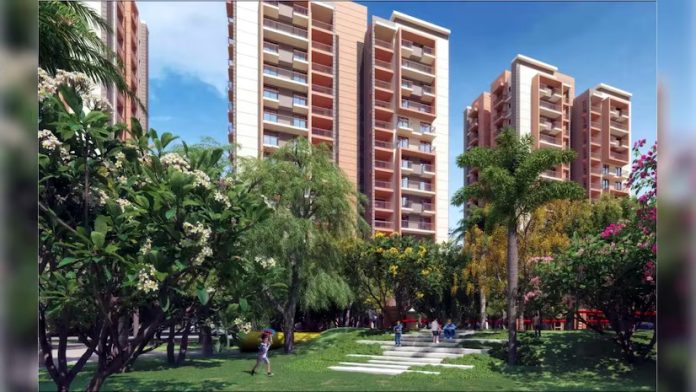Wednesday, September 18, 2024 A growing trend in the travel industry, particularly in the realm of hotel design, is reshaping the way travelers experience their surroundings. This movement, known as biophilic architecture, has captured the attention of global travelers and developers alike. Biophilic design seeks to integrate nature with modern spaces, aiming to foster a stronger connection between people and the natural environment.
This trend is not just about aesthetics, but also about enhancing well-being and promoting sustainability. The travel industry has begun to adopt biophilic hotels, with Asia leading the way in this innovative and transformative approach to hospitality. Jean-Michel Gathy, a renowned architect, has been recognized for his work in incorporating biophilic design into urban hotels.

His design creates green oases within bustling cities, inviting guests to connect with nature even when surrounded by urban landscapes. Gathy’s approach represents a growing shift in hotel design, where the emphasis is on blending nature and luxury to offer guests a healthier and more harmonious travel experience. The biophilic design trend, while not entirely new, has gained significant momentum in recent years.
Traditionally, tropical resorts were the pioneers in reflecting natural surroundings through their architecture. Whether it’s the rustic bamboo structures found in Indonesian resorts like Bambu Indah or the elegant thatched roofs at The Brando in French Polynesia, these resorts have long sought to harmonize with nature. However, the recent wave of biophilic architecture is now being embraced in urban hotels, marking a shift from its roots in tropical resorts to cities worldwide.
Mark Wong, Senior Vice President of Small Luxury Hotels in the Asia-Pacific region, commented on this growing trend. He emphasized that post-pandemic travelers are increasingly seeking the mental and physical benefits that come from connecting with nature. With scientific studies linking nature exposure to improved heart health and cognitive functioning, hotels are now striving to meet this demand.
As a result, biophilic designs are making their way from remote resorts to urban centers, offering a serene escape from the chaos of city life. Architects like Kengo Kuma are at the forefront of the biophilic design revolution, with his work on hotels such as the Hyatt Centric Kota Kinabalu in Malaysia. Kuma’s designs use natural materials like wood to create a sense of warmth and tranquility.
In Japan, Kuma’s work on the Kai Yufuin Ryokan offers stunning views of the surrounding landscape through floor-to-ceiling windows, enhancing the guest experience by framing nature itself as part of the décor. Kuma has expressed that the use of natural elements in architecture can provide a liberating feeling for guests, allowing them to escape the confines of traditional buildings. His urban project, The Tokyo EDITION Toranomon, further demonstrates the potential of biophilic design in city environments, using greenery to create an urban oasis.
These architectural innovations are not just about enhancing the aesthetics of a space, but also about transforming how travelers engage with their environment. In Singapore, the government has been supportive of biophilic architecture, making it a hub for groundbreaking designs. Local architecture firm WOHA, known for iconic green buildings, has partnered with Pan Pacific Hotels Group to develop hotels like the Pan Pacific Orchard, which integrates nature with modern luxury.
This 23-story building boasts terraces with lush greenery and water plazas, creating pockets of natural retreats above the city streets. Biophilic design is not only aesthetically pleasing but also plays a crucial role in promoting sustainability. The Pan Pacific Orchard, for example, achieved the BCA Green Mark Platinum status for its efforts in reducing environmental impact.
The design incorporates solar panels, rainwater harvesting systems, and natural ventilation, which help to lower energy consumption. The abundance of plant life also contributes to air purification and temperature regulation, making the building more eco-friendly. Architect Richard Hassell, co-founder of WOHA, pointed out that biophilic design has both psychological and physical benefits.
He explained that these designs allow guests to reconnect with nature, providing a sense of paradise that is often missing in urban life. The trend not only reflects a desire for luxury but also addresses a deeper need for sustainability in the travel and hospitality industries. The rise of biophilic architecture in hotels is expected to have a profound impact on the global travel industry.
As travelers become more conscious of their environmental footprint, the demand for sustainable yet luxurious accommodations is increasing. Hotels that embrace biophilic design can offer a unique experience that caters to this growing market of eco-conscious travelers. Additionally, the wellness benefits associated with being immersed in nature are becoming a selling point for hotels, attracting guests who prioritize mental and physical health during their travels.
Asian hotels, in particular, are setting the standard for biophilic architecture. Properties such as The Datai Langkawi in Malaysia and Buahan, a Banyan Tree Escape in Bali, have become icons of this trend, offering guests the opportunity to experience nature firsthand. These hotels have adopted a “no walls, no doors” approach, allowing guests to feel at one with the natural surroundings.
This immersive experience is gaining popularity among travelers seeking a deeper connection to nature and a respite from the fast-paced modern world..



















